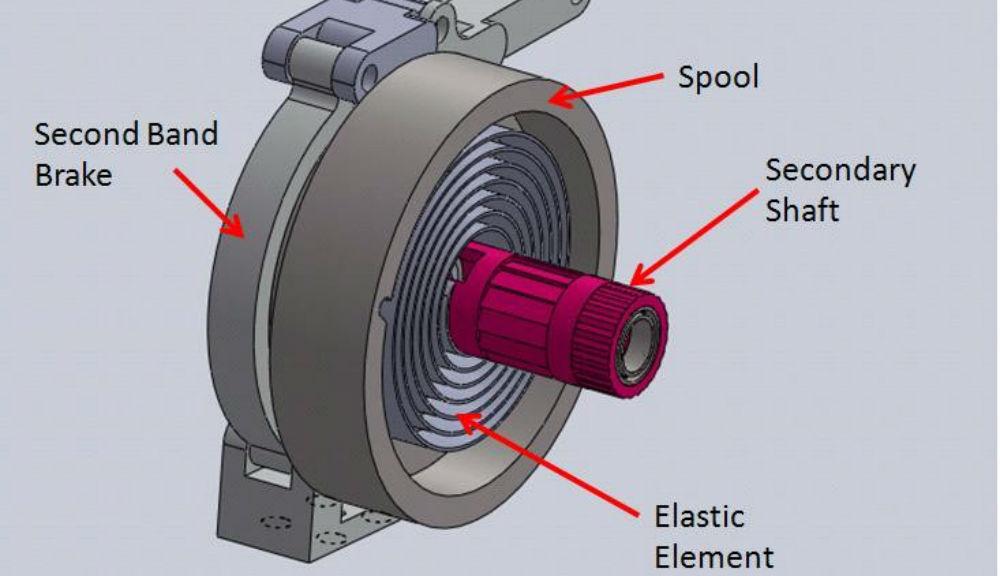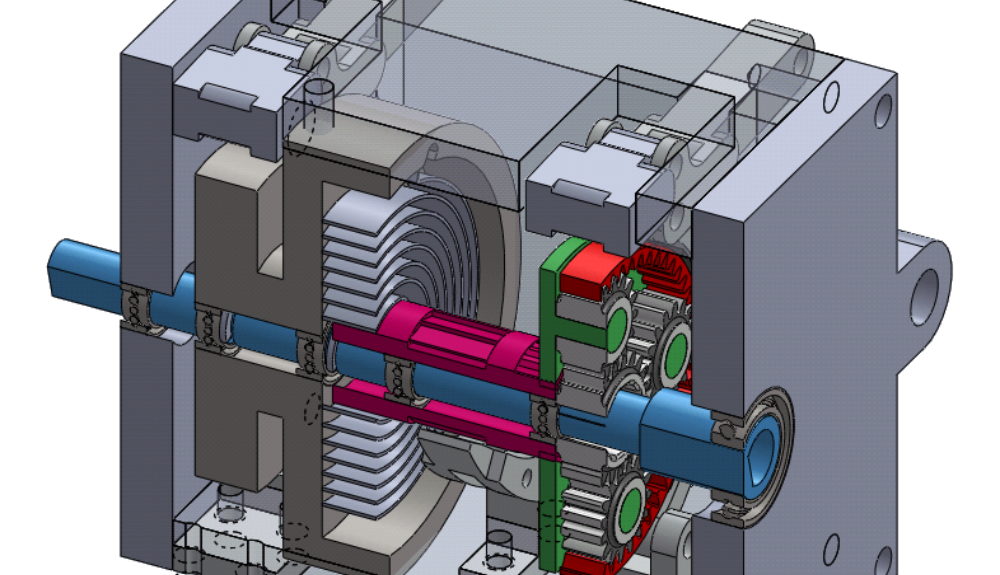Actuation systems and methods -- Rotary and Linear One-To-Many (OTM) Systems
Description of Market Need: Cost-effective actuation systems which are lightweight, compact, modular, and efficient, that can amplify both force and power, that have great power to mass ratio as well as excellent mass to number of degrees of freedom ratio, that safeguard motor and hence are both robust and durable, can be extremely beneficial for wide variety of applications including wearable devices, mobile robots, industrial machines, and general robotics. The One-To-Many (OTM) system is a novel concept for actuation and mechanical energy storage. It is a mechanical, non-fluid analogue of pneumatic and hydraulic system; it utilizes energy of a single strong and powerful electric motor (prime mover similar to pump) which is then distributed to many degrees of freedom by means of an intelligent network of elastic elements and clutches (similar to valves). Hence, almost every application utilizing fluid actuation can instead employ the non-fluidic OTM system in a more controlled fashion, without nuisance of fluid leakages or fluid instabilities with local disturbances affecting the entire hydraulic or pneumatic system. Still further, the OTM can be very attractive solution for applications in harsh environments (e.g. space or deep sea) where non-fluidic actuation is a better solution.
Description of Approach: The OTM system allows a single main actuator, e.g. electric motor to energize multiple independently controlled degrees of freedom. To modular system architecture includes network of modules each dedicated for specific degree of freedom and each with an elastic element (rotary or linear) that can be either engaged to the main actuator (to store elastic energy) or to the load (to release elastic energy). Each module utilizes a clutch assembly to transfer energy in desired fashion. A single motor operating at optimal motor conditions (as it is never connected directly to load) can actuate any number of degrees of freedom with power amplification capability. Hence, the system can be a portable, lightweight, cost-effective, and energy-efficient alternative to traditional actuators.
Key Features/Benefits
Benefits: The “One-To-Many” (OTM) concept allows a single electric motor to store energy in the form of elastic potential energy to drive multiple independently controlled mechanical degrees of freedom. Hence, the OTM concept offers an alternative to conventional methods of actuation by minimizing the number of electric motors in a system, hence relaxing the power, mass, dimensions, and cost of the system. In the case of both linear and rotary OTM system architecture, the energy stored in the elastic medium is defined by the position of the end points of the elastic medium. In the linear case, the end points are limited by finite dimension of allowed linear space. In difference, the rotary OTM system operates in the unlimited rotational space and hence provides more relaxed conditions for control of the system and does not require an automated mechanical reset, allowing for 100% duty cycle operation, introducing the possibility of much greater performance. A single motor operating at optimal motor conditions (as it is never connected directly to load) can actuate any number of degrees of freedom with power amplification capability. Hence, the system can be a portable, lightweight, cost-effective, and energy-efficient alternative to traditional actuators. The OTM is a very attractive solution for wearable devices, mobile robots, industrial machines, and general robotics. Still further, the OTM can be very attractive solution for applications in harsh environments (e.g. space or deep sea) where non-fluidic actuation can be easier to apply.
Competing Approaches: The One-To-Many (OTM) system is a novel concept for actuation and mechanical energy storage. Currently, there is no directly competing approach. The OTM is a mechanical, non-fluid analogue of pneumatic and hydraulic system; it utilizes energy of a single strong and powerful electric motor (prime mover similar to pump) which is then distributed to many degrees of freedom by means of an intelligent network of elastic elements and clutches (similar to valves). Hence, almost every application utilizing fluid actuation system can instead employ the OTM system in a more controlled fashion, without nuisance of fluid leakages or fluid instabilities with local disturbances affecting the entire hydraulic or pneumatic system. Still further, the OTM can be very attractive solution for applications in harsh environments (e.g. space or deep sea) where non-fluidic actuation is a better solution.
The Winner of the 2013 WPI Mechanical Engineering Best MQP in Robotics Engineering Award.


